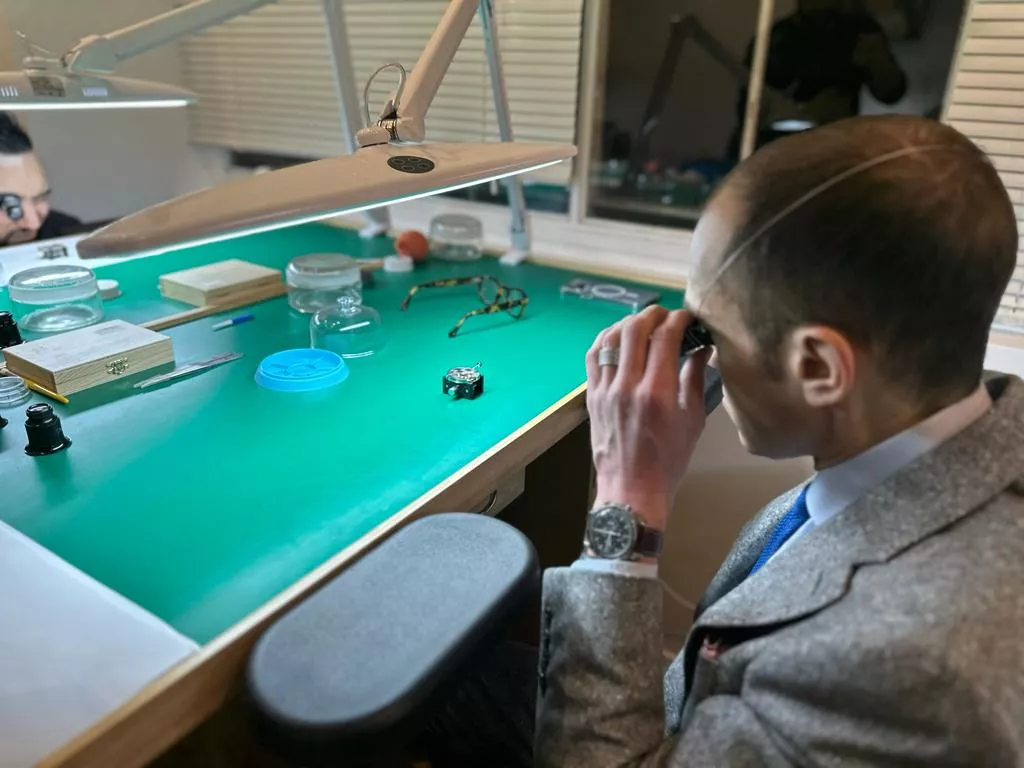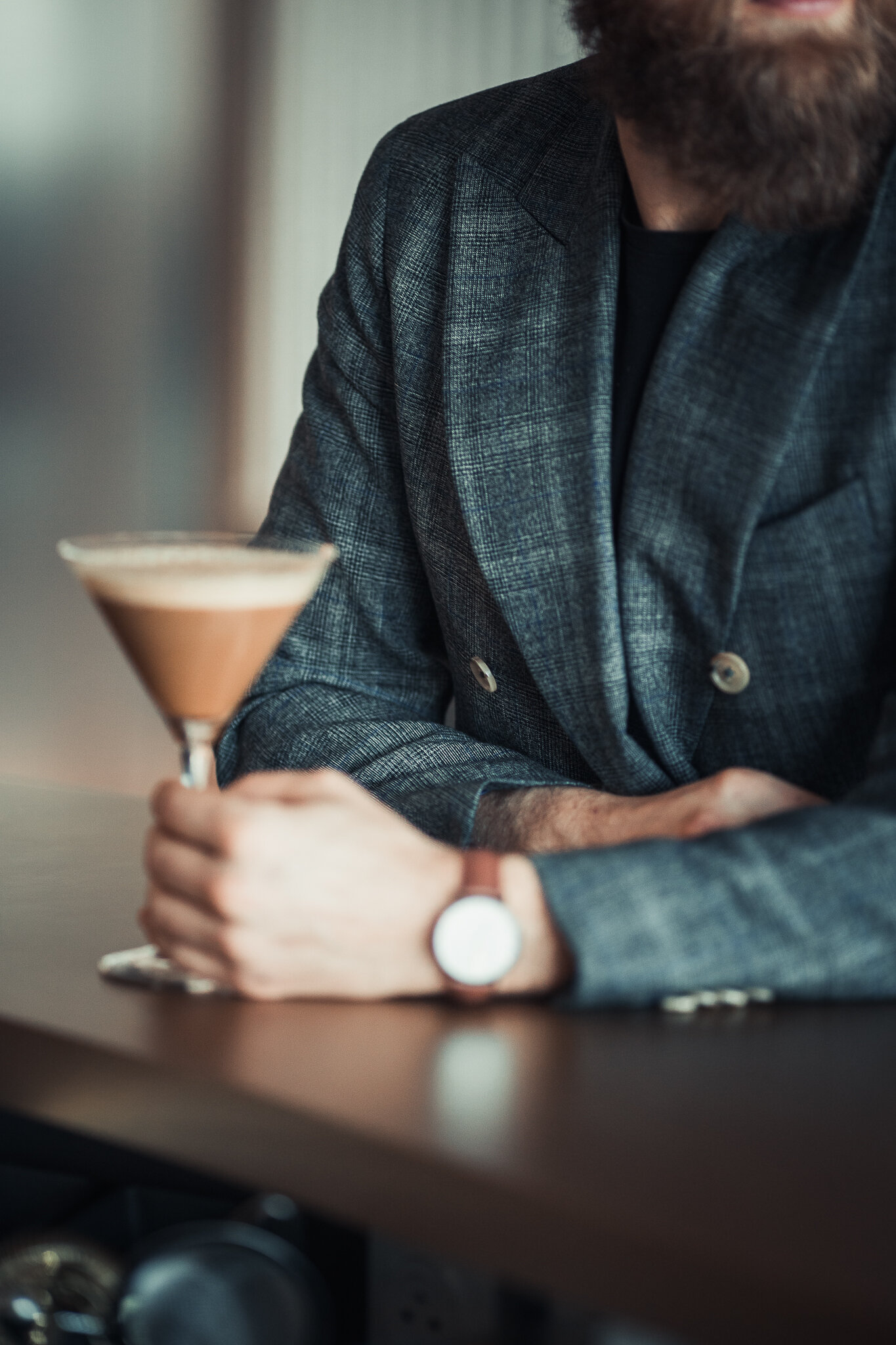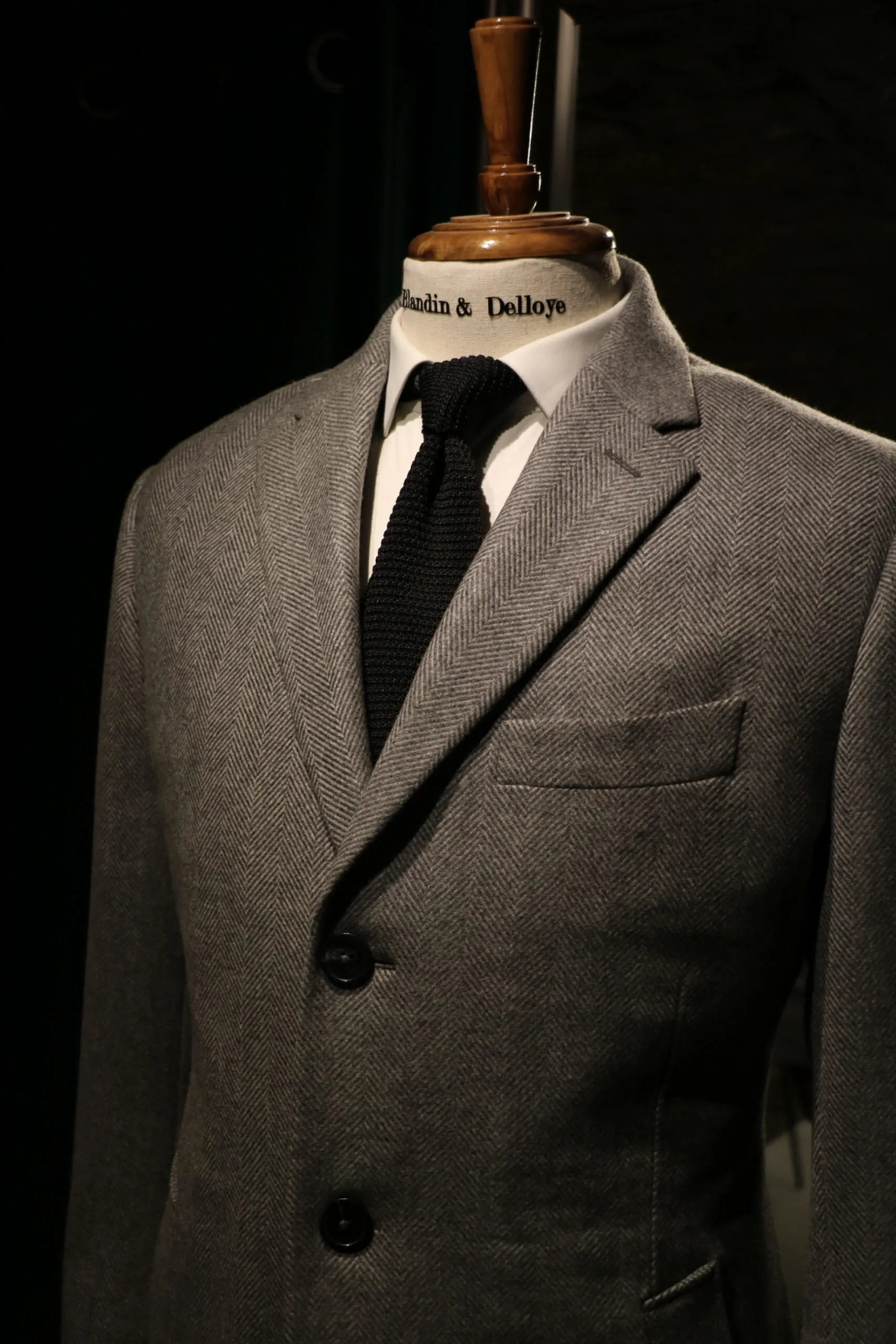
Bold enough for patterns?
The use of patterns can quickly lead to an error in taste, and is enough to discredit an entire made-to-measure suit, even if it is coherent as a whole. The main problem with patterns is that there are so many of them. Worse still, even if we could list them, we wouldn’t be done with them, because they can come in different sizes, prints (like a micro-pattern, or on the contrary a very assertive pattern) shapes and colors, depending on how brands interpret them through their collections.
Don’t panic, we’re going to give you a short list of the main patterns (that can be worn) and how to assemble them easily by following a few rules.
THE DIFFERENT TYPES OF PATTERN
There are three basic types of pattern in men’s fashion, which we’ll describe below.
First of all, check patterns Whether they’re faded (faux-uni, gingham or small checks on a shirt) or more or less marked, like the Prince of Wales on a suit, checks always stand out from the crowd. It’s a very common pattern that’s easy to use. However, there’s one rule you need to keep in mind: your body type. If you’re slim, you’ll want to go for a small check pattern that blends in well, otherwise your build will be drowned out by the pattern on your suit, and that’s rarely a pretty sight).
Then come stripes
They’re also pretty easy to wear over a simple or financial shirt (with contrasting collar) or your club ties (prefer the classic navy/red/gray to start with). They also look great with a suit, provided you respect your body shape. When you’re slim, you’ll prefer well-fused stripes, and when you’re more imposing, you can look for more assertive prints.
Paisley, fleur de lys, crosses, polka dots, feather dots, animals… these are out-of-category patterns that are repeated regularly on the print. Ideally, these should only be found on ties and never on your suits. As for made-to-measure shirts, anything is acceptable, as long as it’s casual. These patterns are far too assertive to be worn in a business or formal context.
To conclude, here are the two essential rules to follow to assemble your patterns without risk.
Play with dimensions
Pay attention to the size of the motifs. They must be of different proportions to create a play of patterns that speaks volumes about the care and subtlety you bring to your outfit. And here too, morphology comes into play. So avoid overly invasive patterns that would drown out a slim, slender build.
Strong, basic pieces
Are you familiar with the notion of basics and strong pieces? An outfit must have basics (very smooth pieces like a white shirt, for example), which will calm the strong pieces (marked financial suits or very assertive Prince of Wales or Paisley print ties, for example). The same rules apply to patterns. Some are stronger and flashier than others, which are more muted.
In every composition, try to alternate between a strong pattern, a classic pattern (such as simple stripes) and a discreet, barely perceptible pattern. This is by far the ideal combination for a tastefully worked outfit.
Here are two examples of how to put all this into practice:
1. A Prince of Wales suit, a sky-blue shirt and a polka-dot tie. The strong points of this outfit are the suit and tie, both of which have a pattern. If the Prince of Wales is more pronounced, the polka dots on the tie will need to blend in more. Finally, a plain rainbow-blue (or white) shirt will calm things down and separate the two strong pieces by creating contrast. The clutch should be plain (2 patterned pieces are enough when the suit is part of it).
2. A melted-stripe suit, striped shirt and silk grenadine tie. Here, it’s all about the stripes. The two strongest pieces are the shirt and the suit. The more assertive stripes of the shirt play with the finer stripes of the suit. Finally, the silk grenadine is plain but has a strong character due to its texture, so it will calm the rest of the outfit. The pochette should also be plain (in the same color as the tie, for example, but in a lighter or darker shade to avoid an unsubtle reminder).
To conclude on the secret of patterns, we believe that when in doubt about an outfit, it’s best to lighten it up. The more patterns you put together in an outfit, the more risks you take, which are more likely to make the whole thing cluttered than anything else.


